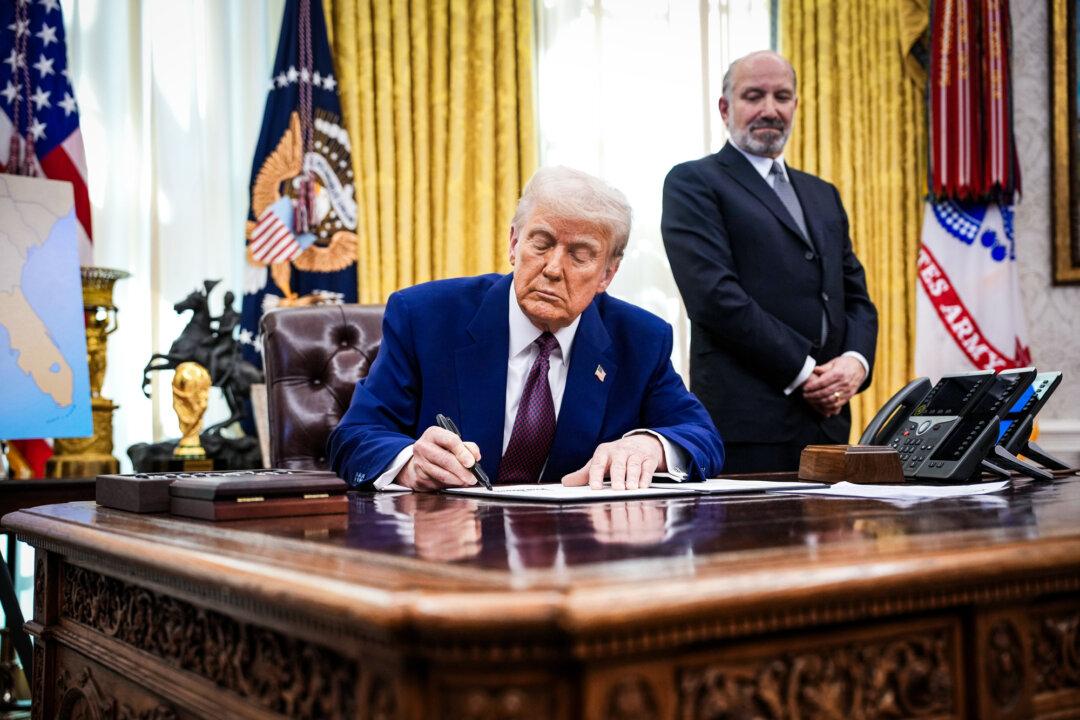In January, the federal government announced a $129 billion shortfall, significantly higher than the $21.9 billion it had logged in the same month last year.
The 12-month rolling deficit over the past year is about $2.1 trillion.
Last month’s budget gap was higher than the consensus forecast of $88.1 billion, fueled by calendar adjustments in benefit payments.
Tax receipts rose by nearly 8 percent from a year ago, totaling $513.294 billion.
Total outlays climbed by about 29 percent year over year, reaching $642 billion. The largest spending items were Medicare at $135 billion, Social Security at $128 billion, and net interest payments at $81 billion.
In the first third of the fiscal year, net interest payments have already increased to $322 billion, roughly in line with defense spending and higher than a plethora of other federal programs.
“Outlays in the first four months of 2025 rose, on net, because payments due on February 1, 2025, a Saturday, were made in January,” the nonpartisan budget watchdog said. “Part of the deficit increase in 2025 also arises from the postponement of some tax deadlines from 2023 to 2024. ... which boosted receipts in 2024.”
The latest numbers show that the U.S. government is still borrowing “at an alarming rate,” Maya MacGuineas, president of the independent policy organization the Committee for a Responsible Federal Budget, said.
“With policymakers considering fiscal policy with high price tags this year–such as tax [cut] extensions, defense spending increases, and other priorities—we need to commit to no new debt and start reducing deficits as part of any new legislation.”
House Budget Resolution
House Republicans released a budget resolution on Feb. 12 calling for $4.5 trillion in tax cuts and $2 trillion in spending cuts.The resolution would increase the debt ceiling by $4 trillion.
House Speaker Mike Johnson (R-La.) said the budgetary framework is the first step in “delivering President Trump’s America First agenda.”

The House Budget Committee will begin considering the blueprint on Feb. 13.
Researchers at the Committee for a Responsible Federal Budget stated that the budget resolution generates $4 trillion of new debt, presents “overly aggressive” economic projections, and potentially hides as much as $6 trillion of debt over 10 years.
Federal Reserve Chair Jerome Powell appeared before the House Financial Services Committee and stressed concerns about the U.S. government’s fiscal health, calling the debt path “unsustainable.”
Cumulative tax revenues and outlays are projected to reach $67.548 trillion and $89.306 trillion, respectively. Mandatory expenses, such as Social Security, Medicare, and interest, account for about 80 percent of the spending in this budget window.
This year, the federal deficit is projected to be nearly $2 trillion.
Speaking in the Oval Office alongside President Donald Trump on Feb. 11, billionaire Elon Musk, who is leading the cost-cutting advisory commission the Department of Government Efficiency, said he believes that the budget gap could be halved.
“With the support of the president, we can cut the budget deficit in half—from $2 trillion to $1 trillion,” Musk told reporters.







